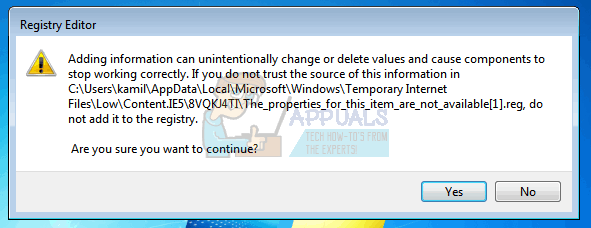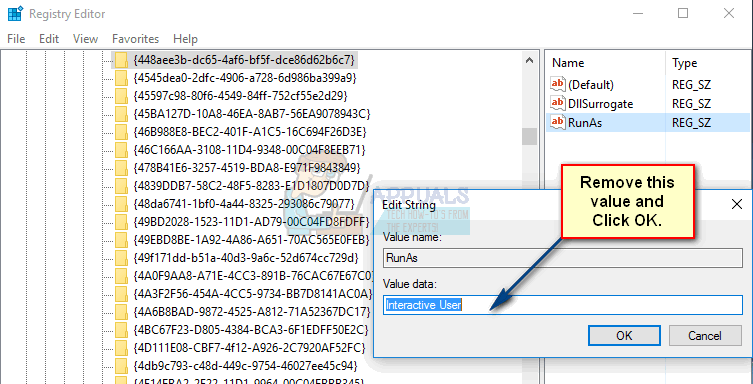FIX: The Properties for This Item Are Not Available
When you open My Computer on Windows 7/This PC on Windows 10, you can see all of the drives connected to that computer – this includes both storage drives such as HDDs and SSDs, and DVD/CD drives. You can get a wide variety of useful information pertaining to any drive connected to a Windows 7/10 computer by opening My Computer/This PC, right-clicking on the drive you want information on and clicking on Properties in the context menu. Clicking on Properties in the context menu will open a new dialog containing everything from the file system that the drive is using and how much free disk space remains on the drive to the options you have for securing or encrypting the drive.
However, for some Windows users, right-clicking on a drive in My Computer/This PC and clicking on Properties in the context menu doesn’t open the Properties window for that drive – instead, doing so produces an error message that reads “The properties for this item are not available”.

This issue can be pretty aggravating as it prevents affected users from finding out how much free and used disk space any of the drives connected to their computer has, and also inhibits them from securing any of their drives or getting additional yet extremely important information on them.
Well, thankfully, the cause of this problem, in almost every single case, is a few missing or corrupted registry keys in the registry of the affected computer. That being the case, this issue can be fixed by simply adding the missing registry keys back to the registry or overwriting the corrupted or damaged registry keys with fresh ones.
On a Windows 7 Computer
In order to do so, you need to download the Registry fix from here
Navigate to where you saved the .REG file and double-click on it to launch it.
When asked to confirm the action, click on Yes. The registry values in the .REG file will then be added to your registry, and you will know the process is complete when you receive the confirmation message onscreen.

You should now be met with the Properties window whenever you go into My Computer, right-click on a drive connected to the computer and click on Properties!

On a Windows 10 Computer
Make sure Windows is fully updated, and the windows updates haven’t failed to install updates. This issue when reported was fixed in the KB3140745 update. However, this should have been applied automatically. If updating doesn’t help then do the following:
Hold the Windows Key and Press R. Type regedit and click OK. Browse to
HKEY_LOCAL_MACHINE\SOFTWARE\Classes\AppID\
Press and Hold CTRL + F (make sure) that the AppID folder is highlighted, and type dce86d62b6c7 in the Finder dialog.

Click Find Next, once it has found the subclasses key folder, you will be in {448aee3b-dc65-4af6-bf5f-dce86d62b6c7} right click on it and change the trusted owner to your own username. If you don’t know how, then check out “Registry Permissions” guide.

Once you’re the owner of the key, double click the RunAs key and remove the Interactive User vaue. Save and reboot the system.
If the above error persists and file/windows explorer keeps on crashing then the problem might be bigger than a bad registry. Follow the solution below.
For some users, this error is extreme. The right hand side panel might be functioning okay, but when they right click on the left panel, the error “the properties for this item are not available” appears and windows/file explorer crushes.
In such a situation, it means that one or more of your drives might be causing this issue. Either data on the drive is not being decoded properly, the file system is corrupt, the boot information of the drive is unreadable or the files on the drive are corrupt. The bad data will choke windows/file explorer as it tries to get the properties of the drive. This will then throw you “the properties for this item are not available” error and force windows/file explorer to terminate in a bid to clear the corrupt information from the RAM. The explorer might restart or you might need to restart it from the task manager.
Here is how to remedy this situation:
- Eject all your external/removable storage media.
- Insert them back one by one and find the one causing the problem.
- Since you won’t be able to right click on this drive, we will use command prompt to repair or format the disk. Press Windows/Start Key + R to bring up the Run window
- Type CMD on the Run text box and press enter
- To scan and repair/fix your removable media, type the command ‘chkdsk /f E:’ on the command prompt window, where E: is the drive letter of your storage device.
- To format the storage device type ‘format E:’ on the command prompt window; where E: is the drive letter of your storage device.
Your device will now be readable to windows/file explorer and you can view its properties without the error and crushing of the file/windows explorer.